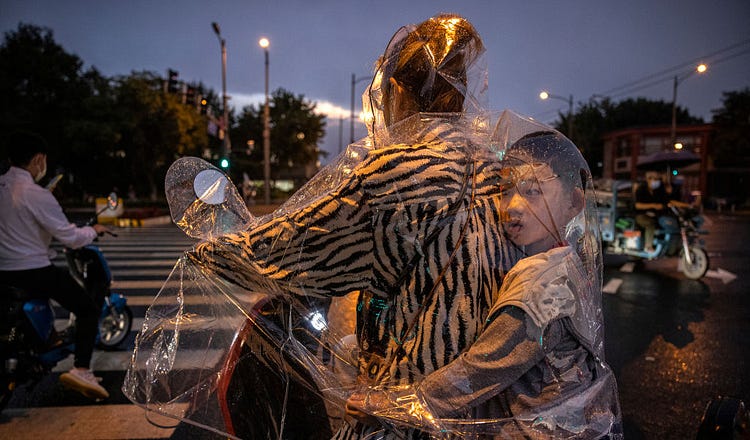When Motherhood Requires Lifting a Whole World Off Its Axis

A boy sits inside his mother's plastic raincoat as they wait to cross at a traffic light during a rainstorm in Beijing, China. (Kevin Frayer via Getty Images)
I spent years desperately trying to solve the mystery of my son’s illness. A chance encounter with another mother changed my life—and is now poised to change his.
214
Maybe you are lucky and you have a friend like Alana Newhouse. If you’re even luckier, you have a mother like her.
Alana has spent the past seven years trying to solve the mystery of her son’s illness. As she writes below: “If parenting a child with special needs is like pushing an enormous boulder up a treacherous mountain, parenting a child with speci…
Continue Reading The Free Press
To support our journalism, and unlock all of our investigative stories and provocative commentary about the world as it actually is, subscribe below.
$8.33/month
Billed as $100 yearly
$10/month
Billed as $10 monthly
Already have an account?
Sign In

